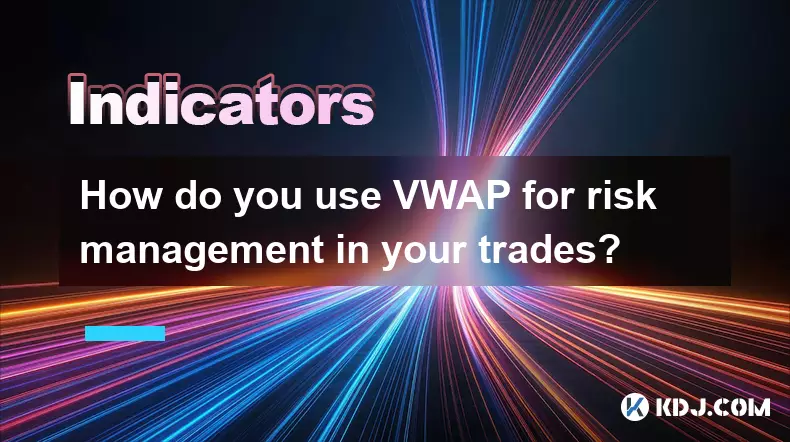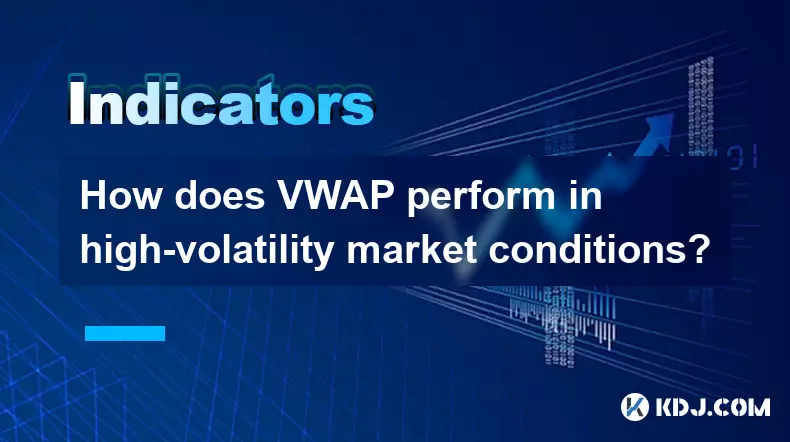-
 bitcoin
bitcoin $115692.075601 USD
5.13% -
 ethereum
ethereum $4162.931611 USD
11.68% -
 bnb
bnb $1310.063287 USD
17.56% -
 tether
tether $1.000983 USD
0.00% -
 xrp
xrp $2.534505 USD
8.16% -
 solana
solana $198.235737 USD
13.49% -
 usd-coin
usd-coin $1.000236 USD
0.02% -
 dogecoin
dogecoin $0.207352 USD
12.89% -
 tron
tron $0.323043 USD
3.62% -
 cardano
cardano $0.701559 USD
11.88% -
 hyperliquid
hyperliquid $39.924597 USD
8.30% -
 chainlink
chainlink $18.934457 USD
11.56% -
 ethena-usde
ethena-usde $1.000552 USD
0.02% -
 stellar
stellar $0.340575 USD
7.05% -
 bitcoin-cash
bitcoin-cash $545.011757 USD
8.86%
How do you use the BandWidth indicator with BOLL?
BandWidth measures Bollinger Band width to gauge crypto volatility, helping traders spot consolidation and potential breakouts when combined with other tools.
Oct 12, 2025 at 10:01 pm

Understanding the BandWidth Indicator in Cryptocurrency Trading
1. The BandWidth indicator is derived from Bollinger Bands, a widely used technical analysis tool in the cryptocurrency market. It measures the relative width between the upper and lower bands of the Bollinger Bands system. This metric helps traders assess volatility levels by showing how far apart the bands are at any given time.
2. BandWidth is calculated by taking the difference between the upper and lower Bollinger Bands, then dividing that value by the middle band (typically a 20-period simple moving average). As volatility increases, the bands expand, causing BandWidth to rise. Conversely, during periods of low volatility, the bands contract and BandWidth decreases.
3. In the fast-moving crypto markets, BandWidth provides a clear visual representation of volatility compression and expansion. Traders monitor shrinking BandWidth values as potential signals of upcoming price breakouts. When BandWidth reaches extremely low levels, it often precedes sharp price movements as the market prepares to exit a consolidation phase.
4. The sensitivity of BandWidth makes it particularly useful for identifying potential reversals or continuations in digital asset prices. For instance, Bitcoin or Ethereum may enter tight trading ranges before major news events or macroeconomic shifts. During these phases, BandWidth contracts significantly, alerting traders to prepare for increased volatility.
5. BandWidth does not provide directional bias on its own. It only reflects changes in volatility. Therefore, it must be used in conjunction with other tools such as price action patterns, volume indicators, or momentum oscillators to confirm trade setups generated by Bollinger Bands.
Combining BandWidth with Bollinger Bands for Entry Signals
1. When BandWidth reaches historically low levels, it suggests that the cryptocurrency is experiencing minimal volatility. This condition often occurs after extended sideways movement. Traders watch for a subsequent expansion in BandWidth as confirmation that volatility is returning, which may coincide with a breakout from a range-bound market.
2. A common strategy involves waiting for a squeeze pattern—identified by narrow Bollinger Bands and low BandWidth—followed by a strong candle closing outside the bands. If BandWidth begins expanding at the same time, the probability of a sustained move increases. This setup is frequently applied to altcoins like Solana or Cardano, which are prone to sudden volatility spikes.
3. Some traders use BandWidth to filter out false breakouts. If a price moves beyond the Bollinger Band but BandWidth remains flat or declines, the breakout may lack conviction. However, if BandWidth starts rising immediately after the breach, it validates the strength of the move.
4. Divergences between price and BandWidth can also offer insights. For example, if the price of a cryptocurrency makes higher highs while BandWidth makes lower highs, it indicates weakening volatility despite upward momentum, potentially signaling exhaustion.
5. Automated trading bots often incorporate BandWidth thresholds to trigger entries. A bot might initiate a long position when BandWidth crosses above a predefined level after being below it for a certain number of periods, indicating renewed volatility following a calm period.
Managing Risk Using BandWidth and Bollinger Bands
1. Position sizing can be adjusted based on BandWidth readings. During periods of high BandWidth, when volatility is elevated, traders may reduce position sizes to account for wider price swings. Conversely, during low BandWidth phases, larger positions might be considered in anticipation of breakout moves, though stop-loss orders remain essential.
2. Stop-loss placement benefits from BandWidth analysis by aligning with recent volatility extremes. For example, placing a stop just inside the opposite Bollinger Band becomes more reliable when BandWidth is expanding, as it reflects current market volatility rather than outdated price ranges.
3. Trailing stops can be dynamically adjusted using BandWidth. As volatility increases and BandWidth expands, the distance between the current price and the trailing stop can widen proportionally, helping avoid premature exits during healthy pullbacks in strong trends.
4. Risk management systems in algorithmic crypto trading platforms often include BandWidth-based circuit breakers. If BandWidth spikes beyond a critical threshold—indicating extreme volatility—the system may temporarily halt trading to prevent execution at unfavorable prices during flash crashes or pump-and-dump schemes.
5. Monitoring BandWidth across multiple timeframes enhances risk assessment. A daily chart showing low BandWidth combined with an hourly chart displaying rising BandWidth could suggest an imminent intraday breakout, prompting tighter risk controls on open positions.
Frequently Asked Questions
What causes BandWidth to shrink in cryptocurrency markets?BandWidth shrinks when price volatility decreases, typically during consolidation phases. This occurs when buying and selling pressures are balanced, leading to narrow trading ranges. Events such as market indecision, low trading volume, or anticipation of major announcements can contribute to this contraction.
Can BandWidth be used alone to make trading decisions?No, BandWidth should not be used in isolation. While it effectively measures volatility, it does not indicate price direction. Successful trading strategies combine BandWidth with Bollinger Bands, volume data, and other technical indicators to improve signal accuracy.
How do you set optimal parameters for BandWidth in crypto trading?The default Bollinger Bands settings (20-period SMA, 2 standard deviations) are commonly used, but crypto traders often adjust them based on asset volatility. For highly volatile coins, increasing the period or standard deviation can smooth the BandWidth line and reduce noise. Backtesting on historical data helps identify effective configurations.
Disclaimer:info@kdj.com
The information provided is not trading advice. kdj.com does not assume any responsibility for any investments made based on the information provided in this article. Cryptocurrencies are highly volatile and it is highly recommended that you invest with caution after thorough research!
If you believe that the content used on this website infringes your copyright, please contact us immediately (info@kdj.com) and we will delete it promptly.
- XRP Price Prediction: Weekend Rollercoaster or Rally?
- 2025-10-12 08:45:16
- Bittensor (TAO): Super Bullish Signals Point to Potential 2x Rally
- 2025-10-11 10:25:12
- Silver Price Correction: Navigating the Dip & Identifying Key SEO Keywords
- 2025-10-11 10:25:12
- Decoding Crypto Trends: Bittensor's Bull Run, Cardano's Dip, and LivLive's Presale Buzz in 'Uptober 2025'
- 2025-10-12 08:45:16
- MoonBull: The Crypto Meme Coin Promising 1000x Gains?
- 2025-10-11 10:30:01
- Crypto Payroll Revolution: Stablecoins, Altcoins, and the Future of Salary Payments
- 2025-10-11 10:30:01
Related knowledge

What's the main difference between VWAP and TWAP?
Oct 12,2025 at 11:54am
Understanding VWAP and Its Role in Crypto Trading1. Volume Weighted Average Price (VWAP) is a trading benchmark that calculates the average price of a...

How do you identify exhaustion moves using VWAP and its bands?
Oct 12,2025 at 08:00am
Understanding the Role of Decentralized Exchanges in Crypto Trading1. Decentralized exchanges (DEXs) operate without a central authority, allowing use...

What are the main advantages of using VWAP over EMA?
Oct 11,2025 at 02:18am
Main Advantages of Using VWAP Over EMA1. Volume-Weighted Average Price (VWAP) incorporates trading volume into its calculation, offering a more accura...

How do you use VWAP on different chart types like Heikin Ashi?
Oct 11,2025 at 05:01pm
Understanding VWAP in the Context of Heikin Ashi Charts1. The Volume Weighted Average Price (VWAP) is a powerful analytical tool commonly used by trad...

How do you use VWAP for risk management in your trades?
Oct 11,2025 at 02:54am
Understanding VWAP as a Dynamic Benchmark1. The Volume Weighted Average Price (VWAP) serves as a crucial reference point in intraday trading by reflec...

How does VWAP perform in high-volatility market conditions?
Oct 10,2025 at 08:00pm
Understanding VWAP in Turbulent Market Phases1. Volume-Weighted Average Price (VWAP) serves as a benchmark for institutional traders aiming to assess ...

What's the main difference between VWAP and TWAP?
Oct 12,2025 at 11:54am
Understanding VWAP and Its Role in Crypto Trading1. Volume Weighted Average Price (VWAP) is a trading benchmark that calculates the average price of a...

How do you identify exhaustion moves using VWAP and its bands?
Oct 12,2025 at 08:00am
Understanding the Role of Decentralized Exchanges in Crypto Trading1. Decentralized exchanges (DEXs) operate without a central authority, allowing use...

What are the main advantages of using VWAP over EMA?
Oct 11,2025 at 02:18am
Main Advantages of Using VWAP Over EMA1. Volume-Weighted Average Price (VWAP) incorporates trading volume into its calculation, offering a more accura...

How do you use VWAP on different chart types like Heikin Ashi?
Oct 11,2025 at 05:01pm
Understanding VWAP in the Context of Heikin Ashi Charts1. The Volume Weighted Average Price (VWAP) is a powerful analytical tool commonly used by trad...

How do you use VWAP for risk management in your trades?
Oct 11,2025 at 02:54am
Understanding VWAP as a Dynamic Benchmark1. The Volume Weighted Average Price (VWAP) serves as a crucial reference point in intraday trading by reflec...

How does VWAP perform in high-volatility market conditions?
Oct 10,2025 at 08:00pm
Understanding VWAP in Turbulent Market Phases1. Volume-Weighted Average Price (VWAP) serves as a benchmark for institutional traders aiming to assess ...
See all articles























![[4K 60fps] Anyway by Retropt (1 Coin) [4K 60fps] Anyway by Retropt (1 Coin)](/uploads/2025/10/13/cryptocurrencies-news/videos/k-fps-retropt-coin/68ec4f42a41d0_image_500_375.webp)


















































